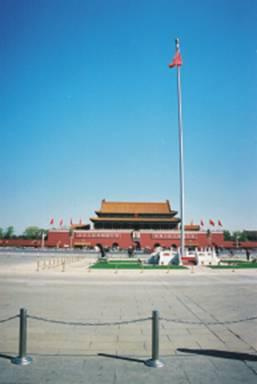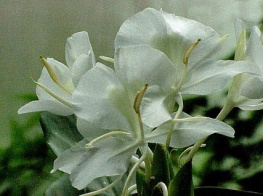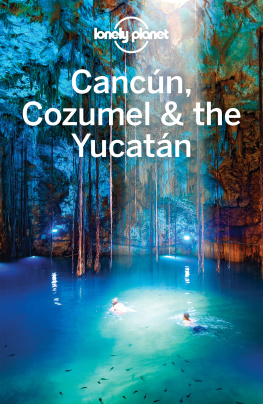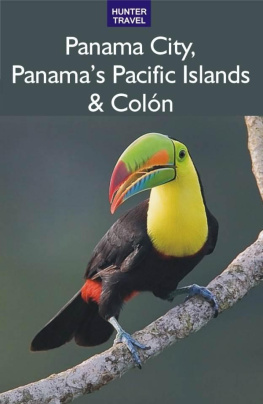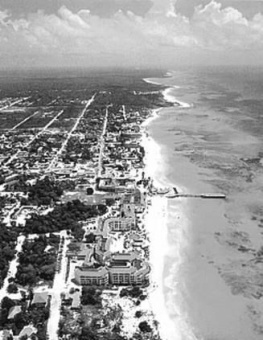Nevada Adventure Guide
Matt Purdue
HUNTER PUBLISHING, INC.
1220 Nicholson Rd., Newmarket, Ontario,
Canada L3Y 7V1, (800) 399 6858
The Boundary, Wheatley Road, Garsington
Oxford, OX44 9EJ England
01865-361122; fax 01865-361133
Matt Purdue
Maps by Kim Andr, Hunter Publishing, Inc.
For complete information about the hundreds of other travel guides offered by Hunter Publishing, visit our Web site at:
www.hunterpublishing.com
All rights reserved. No part of this book may be reproduced, transmitted or utilized in any form or by any means, electronic or mechanical, including photocopying, recording, or by any information storage and retrieval system, without permission in writing from the publisher. Brief extracts to be included in reviews or articles are permitted.
Every effort has been made to ensure that the information in this book is correct, but the publisher and authors do not assume, and hereby disclaim, liability to any party for any loss or damage caused by errors, omissions, misleading information or potential problems caused by information in this guide, even if such errors or omissions are a result of negligence, accident or any other cause.
Dedication
To Jordan, who has taught me to see the desert and life in ways I never dreamed possible. Let's get lost.
About the Author
Matt Purdue has won numerous national and regional journalism honors for his sports and outdoor writing. In 1997 he won a National Newspaper Association award for best sports feature. His writing and photographs have appeared in national magazines and major newspapers, including the Los Angeles Times, Los Angeles Daily News, Orange County Register and Outside, Backpacker, and Mountain Biking magazines. He resides in both Southern Nevada and Southern California, where he can usually be found leading a hike, a fishing expedition or a mountain bike ride.

Introduction
History
The state of Nevada rolls out the red carpet for some 29 million visitors every year. About 27 million of them, however, come for one thing only: Las Vegas. In fact, Vegas recently surpassed Orlando, Florida, as the top tourism destination in the US.
For anyone who loves the outdoors, that's good news. Nevada's booming popularity it's the second most-visited state in the country behind California makes the backcountry relatively cheap and easy to access through gateways in Vegas and Reno/Tahoe. While everybody else heads toward the Strip and its faux Sphinx, half-pound hot dogs, plastic volcano and campy lounge acts, you'll know better. Once you get away from the surreal glow of the casino lights, the incessant plink-plink-plink of the slot machines, the stale haze that hangs over the blackjack tables and head out into the Great Basin, you can have the whole wild, woolly and naturally amazing state almost to yourself.
Among the 50 states, the Silver State ranks seventh in size and 41st in population, which means that you have just about enough room to do whatever it is you want to do. Although Nevada has been the fastest growing state for the past 25 years, the population density is still only nine folks per square mile, second lowest in the nation behind Alaska. In fact, more than a few adventurous souls have called Nevada "the poor man's Alaska," and for good reason. According to author John Hart, by 1825 only two large regions of North America were unexplored: the backcountry of Alaska and the interior of the Great Basin, which covers most of Nevada. Much of that Great Basin hasn't changed significantly since leather-skinned John C. Fremont and ol' Kit Carson himself mapped the region in the 1840s. But the Nevada encountered by the native peoples who were sharpening spear tips near Lovelock between 7,500 and 10,000 BC was vastly different than the desert country it is today.
Nevada's sociological history begins when the region was much wetter and more verdant and supported a wide range of mammals. These mammoths, horses, bison, giant sloths, mastodons and caribou fed many groups of hunting cultures as they roamed the grasslands, pausing on the shores of huge freshwater lakes to drink. Many prime archeological sites, like ones near Tule Springs just north of Las Vegas and Grimes Point and Hidden Cave near Fallon, correspond to the geologic remains of prehistoric lakes, wetlands and springs. Today many of the state's museums display evidence of the everyday lives of these little-known peoples: baskets, points, hand tools, fish hooks, shells, and exquisite duck decoys woven from reeds. The rocks of Nevada themselves also tell their mysterious stories in the form of petroglyphs (symbols painted onto rock) and pictographs (forms etched or carved into rock) found in abundance in areas like Valley of Fire State Park and Hickison Petroglyph Recreation Area.
A group of people known collectively as the Lovelock Culture seems to have occupied northern Nevada beginning about 1800 BC. Fine examples of their artifacts have been found in Lovelock Cave. In the south, the Archaic Indians began hunting and gathering about 2500 BC, followed by tribes known as the Basket Maker people beginning about 300 BC. By about 500 AD, the Anasazi (which comes from the Navajo and means "enemies of our ancestors") were flourishing throughout the Southwest, including southern Nevada. These peoples built permanent adobe structures called pueblos, established trade routes, crafted fine pottery and developed a sophisticated culture. In the 12th century, however, they mysteriously scattered and disappeared from the landscape. Scientists cite reasons ranging from depleted resources to disease and war for their vanishing. One of their restored pueblos can be found 90 miles northeast of Las Vegas in Overton.
The natives who followed the Anasazi are more clearly defined. The Southern Paiutes hunted and gathered in the increasingly dry regions of southern Nevada. The Northern Paiutes, who call themselves Numa (meaning "the people") shared the Great Basin of northern Nevada with the Shoshone and Washo, the latter occupying the Lake Tahoe area and the broad valleys over the eastern precipice of the Sierra Nevadas. It would be more than 500 years before these Native Americans would encounter the first "illegal aliens."
While men in powdered wigs were pounding out a more perfect union on America's east coast, the first European entered Nevada. In 1776, padre Francisco Garces and two Native American guides, searching for a direct route between New Spain strongholds at Santa Fe and Monterey, traveled through the southern tip of Nevada. Exactly 50 years later, Jedediah Smith, working for the Rocky Mountain Fur Company, followed in Garces' footsteps. His party wintered in California, then returned east and became the first white people to cross central Nevada on their way to Salt Lake City.
In the north, another trapper named Peter Skene Ogden slipped into Nevada from what is now Oregon and reached the Humboldt River in 1828. A year later he returned to follow the Humboldt until the river vanished into the desert soil at Humboldt Sink. In 1830, Mexican Antonio Amijo left Santa Fe and headed west. His group found a shortcut and stopped at a spring in present-day Las Vegas. In 1833, trapper Joseph Walker worked westward on the Humboldt and Walker rivers in the north, then returned east along the route the next year.
Eight years later the first wagon train, the Bidwell Bartelson Party, entered Nevada (which was the property of the Republic of Mexico until the Mexican-American War and the ensuing Treaty of Guadalupe Hidalgo in 1848) and followed the Humboldt River, crossed the dreaded Forty-Mile Desert, and headed over the Sierras. With westward emigration becoming all the rage, John C. Fremont, who would later become a war hero, Indian fighter and presidential candidate, was dispatched to map the area. In 1843 and '44, Fremont and Kit Carson scouted northern Nevada (guided by a Northern Paiute leader named Captain Truckee), encountering Pyramid Lake, naming the Carson River and becoming the first known white people to see Lake Tahoe. They entered California and returned east through southern Nevada, camping at Las Vegas. In 1845, Fremont returned with Walker to continue his meticulous cartography, which helped open the gateway to the West.
Next page

